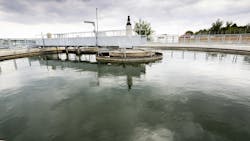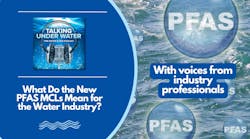The North Carolina Department of Environmental Quality (NCDEQ) announced that the South Burlington Wastewater Treatment Plant has discharged elevated levels of 1,4-Dioxane into the Haw River.
Burlington samples for 1,4-Dioxane daily. The wastewater effluent sample taken on Tuesday, Jan. 23 showed 1,4-Dioxane levels at 545 parts per billion (ppb). This prompted the city to notify NCDEQ’s Division of Water Resources on Wednesday, Jan. 24. NCDEQ published a press release sharing the news on Thursday, Jan. 25.
The Town of Pittsboro, which could see elevated levels in the next few days, is taking steps to protect drinking water and has notified residents.
According to Burlington officials, the city is taking steps to examine the discharge with local manufacturer Apollo Chemical. They have instructed Apollo to cease production and are expediting analysis of the daily effluent samples of Apollo’s discharge to the city wastewater collection system.
The U.S. EPA classifies 1,4-Dioxane as a probable human carcinogen. Several U.S. states have stringent guidelines for exposure to the pollutant in surface water and drinking water. It is a clear liquid that is highly miscible in water. Historically, 1,4-Dioxane has been used as a solvent stabilizer and is currently used for a wide variety of industrial purposes.
NCDEQ’s Division of Water Resources has been conducting monthly stream monitoring for 1,4-Dioxane in the Cape Fear River Basin, Neuse River Basin and the Yadkin River Basin, as well as at 30 stations statewide. The division has also collected samples for 1,4-Dioxane on a weekly basis from the South Burlington Wastewater Treatment Plant since October 2023 and 1,4-Dioxane limits are currently being drafted for the city’s wastewater treatment plant permit renewal.


